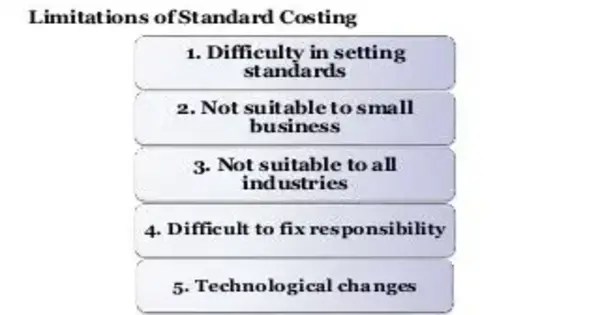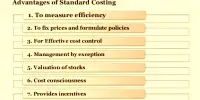Standard costing is a predetermined cost that is calculated from management standards of efficient operations and the relevant necessary expenditure. It can be used as a basis for price fixing and cost control via variance analysis.
While standard costing can be beneficial to business operations, it does have some drawbacks. Despite the benefits mentioned above for some applications of standard costing, there are many more situations where it is not a viable costing system. Here are a few examples of issues:
Problems with Standard Costing
- Cost-plus contracts
If you have a contract with a customer under which the customer pays you for your actual costs plus a profit (known as a cost-plus contract), you must use actual costs as specified in the contract. Standard costing is not permitted.
- Low morale
Most managers are more concerned with problems than with success. In terms of standard cost, they may be spending more time correcting any deviations than they are congratulating employees on a job well done. Employees require positive reinforcement in order to enjoy their jobs and feel like they are an important part of the company. The use of a standard costing system may increase the likelihood of low employee morale.
- Drives inappropriate activities
A number of the variances reported by a standard costing system will cause management to take incorrect actions in order to generate favorable variances. For example, they may purchase raw materials in larger quantities to improve purchase price variance, even if this increases inventory investment. Similarly, management may schedule longer production runs in order to improve labor efficiency variance, even though it is better to produce in smaller quantities and accept less labor efficiency in exchange.
- Employee backlash
Employees may hide any unfavorable variance reports to avoid future repercussions due to low morale. This would give managers a false sense of their profit forecast. Knowing the outcomes of previous variance reports may also lead to employees taking actions that have an impact on the business. Employees may increase output at the end of the month to avoid an unfavorable report. This could result in a lower quality product.
A fast-paced environment. A standard costing system assumes that costs will not change significantly in the near future, allowing you to rely on standards for several months, if not a year, before updating the costs. However, in an environment where product lives are short or continuous improvement is driving down costs, a standard cost may become out-of-date within a month or two.
- Slow feedback
A complex system of variance calculations is an essential component of a standard costing system, which is completed by the accounting staff at the end of each reporting period. If the production department is focused on providing immediate feedback on problems in order to correct them, reporting these variances is far too late to be useful.
Because variance reports are only prepared monthly and it takes time for this information to be released, the information may be out of date by the time it is finally released. This can be avoided by producing more frequent and timely reports.
- Unit-level information
The variance calculations that typically accompany a standard costing report are aggregated for a company’s entire production department and thus cannot provide information about discrepancies at a lower level, such as the individual work cell, batch, or unit.
The preceding list demonstrates that there are numerous situations in which standard costing is ineffective and may even result in incorrect management actions. Nonetheless, as long as you are aware of these issues, standard costing can usually be profitably integrated into some aspects of a company’s operations.














